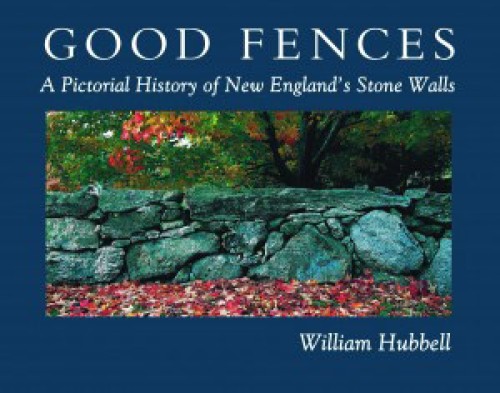by By William Hubbell
Down East Books, 2006
Like no other element of the New England landscape, stone walls relentlessly remind us of the challenging existence faced by those who settled this corner of the world. Stone walls chronicle the geology and history of settlement across the region, along with providing just a glimpse of the endless, back-breaking task of picking stones from the fields and making good use of them in walls of many sorts.
The recent flurry of books about the ubiquitous and intractable place of stone walls in New England’s landscape has been complemented by William Hubbell’s Good Fences. Hubbell, a gifted photographer and a stone wall buff, tips his hat to the stone wall by photographing it in nearly every type of use and condition, covering all variations of form in each of the six New England states.
Hubbell has organized the text historically, just like Robert Thorson’s Stone by Stone, the current definitive work on stone walls. But Stone by Stone, while thoroughly enjoyable, interesting, and comprehensive, contains no photographs. Good Fences is full of beautiful photographs, and though it is organized by era, it chronicles the many different types of stone walls found in every corner of New England: from single-stack farmer’s walls to lace walls; from walls built of round stones in New Hampshire to the square-sided schist and quartzite walls found in Westport, Massachusetts, and Little Compton, Rhode Island; and also disposal or rubble walls – double-stack walls filled with small stones in the middle. “Wet” walls and dry walls. Walls with capstones and walls made of thick slabs. Who ever knew there could be so many different types of walls?
Hubbell also profiles the different uses of walls. Some were used to contain cattle or as sheep folds, some to delineate boundaries, others to show affluence. There are three photos of stiles: customized sections of a wall that allow the passage of humans or dogs, but not cows, along with a section on pounds, the places towns would keep roaming cattle and sheep until their owner claimed them. And Hubbell chronicles how walls deteriorate over time, by the action of frost, creep, erosion, displacement by tree roots, or even displacement of the illegal sort, otherwise known as theft. Hubbell makes it clear that while we think of stone walls as lasting forever, ever so slowly the forces that tirelessly work on them will win. Someday they will be gone.
A fascination with stone walls and the stories they tell is the foundation of Good Fences. The caption of nearly every photo is as thoughtful and interesting as the photographs are beautiful. And to pay homage to the wall builders of yore, Hubbell offers profiles of half a dozen modern day practitioners of the art of stone wall building. Interspersed throughout the book, the profiles often include an old wall somewhere that the mason has always admired. All clearly have a great love for their work. As Ted Peach, a stonemason from Marblehead, Massachusetts, says in his profile, “I like playing with granite.”
Which makes me think: what would the long-dead builders of the region’s stone walls and fences think of us having the time to read and look at books about stone walls? They’d probably just cast a bewildered look at us and shrug, and then get back to work.


